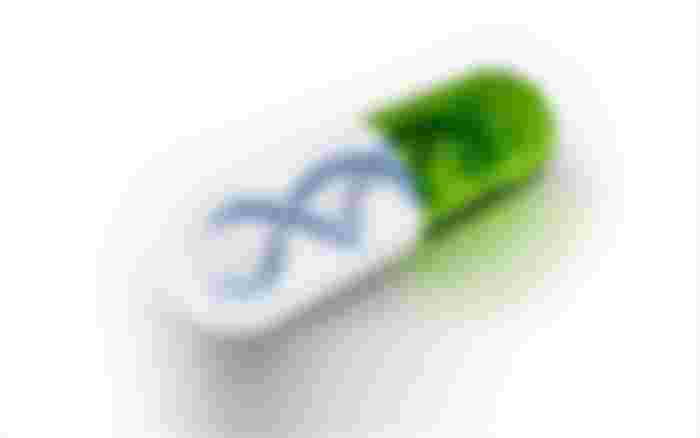LOCAL ANESTHETICS – DEFINITION
A substance which reversible inhibits Nerve conduction when applied directly to tissues at non - toxic concentrations.
What are properties deemed most desirable for a local anesthetic?
It should not be irritating to the tissue to which it is applied.
It should not cause any permanent alteration of nerve structure.
Its systemic toxicity should be low.
It must be effective regardless of whether it is injected into the tissue or applied locally to mucous membrane.
The time of onset of anesthesia should be as short as possible.
The duration of action must be long enough to permit completion of the procedure yet not so long as to require an extended recovery.
It should have potency sufficient to give compete anesthesia without the use of harmful concentrated solutions.
It should be relatively free from producing allergic reactions.
It should be stable in solution and readily undergo biotrasformation in the body.
It should either be sterile or capaple of being sterilized by heat without deterioration.

What is the ORDER OF SENSORY FUNCTION BLOCK?
Pain.
Cold.
Warmth.
Touch.
Deab pressure.
Motor.
Dissociation of Local Anesthesia:
● Local anesthetics are available as salts (usually hydrochloride) for clinical use/injection. the local anesthetic salt, both water soluble and stable is dissolved in either sterile water or saline.
● In this solution it exists simultaneously as uncharged molecules (RN), also called the free base, and positively charged molecules (RNH), called the cation.
● In the presence of a high concentration of hydrogen ions (low pH), the equilibrium shifts to the left and most of the anesthetic solution exists in cationic form.
● As hydrogen ion concentration decreases (higher pH), the equilibrium shifts toward the free base form.
● The relative proportion of ionic forms also depends on the PKa, or dissociation constant, of the specific local anesthetic.
● The PKa is a measure of molecules affinity for hydrogen ions (H+).
● When the pH of the solution has the same value as the PKa of the local anesthetic, exactly 50% of the drug exists in the RNH form and 50% in the RN form.

Action on Nerve Membranes:
● The tow factors involved in the action of a local anesthetic are diffusion of the drug through the nerve sheath and binding at the receptor site in the ion channel.
● The uncharged lipid – soluble , free base form (RN) of the anesthetic is responsible for diffusion through the nerve sheath.
● The charged cationic (RNH ) form of the anesthetic is responsible for binding at the receptor site in the ion channel.
FACTORS AFFECTING LOCAL ANESTHETIC ACTION
PKa Influence:
Lower PKa = more rapid onset of action, more RN molecules present to diffuse trough nerve sheath; thus onset time is decreased.
pH Influence:
■ Usually at range 7.6 – 8.9.
■ Decrease in pH shifts equilibrium toward the ionized form, delaying the onset action.
■ Lower pH, solution more acidic, gives slower onset of action.

Action on Nerve Membranes
Adequate blockade of the nerve is more difficult to achieve in inflamed or infected tissues because of the relatively small number of molecules able to cross the nerve sheath (RN) and the increased absorption of the remaining anesthetic molecules into dilated blood vessels in this region. Although a potential problem in all aspects of dental practice, this situation is seen most often in Endodontics.
EFFECT OF LIPID SOLUBILITY/ ANESTHETIC POTENCY
● Increased Lipid solubility = Increased potency (example: Procaine=1; Etidocaine=140).
● Etidocaine produce conduction blockade at very low concentrations, whereas procaine poorly suppresses never conduction, even at higher concentrations. Agent are more potent as local more Lipophilic anesthetics.
● Effect of Protein binding - Increased binding increases duration of action.
● Effect of NonNervous tissue tissue diffusibility Increased diffusibility = Decreased time of onset.
● Effect of vasodilator activity - greater vasodilator activity = Decreased Potency and decreased duration of action.
Metabolism
Ester-type Local Anesthetics
a. Hydrolyzed in plasma by pseudocholinesterases to their
respective aromatic acid and alcohol.
b. Patients with atypical forms of pseudocholinesterase may experience prolonged effects and exaggerated toxicity.
c. Type of metabolites formed also of clinical importance, i.e. allergic phenomena associated with ester-type anesthetics attributable to formation of p-aminobenzoic acid.
Amide-type Local Anesthetics Metabolized primarily in the liver by CYP P450.

Some types of LOCAL ANESTHETICS:
1. LIDOCAINE:
■ It developed in 1943 by Lofgren as a derivative of xylidine, and introduced in 1948.
■ Onset of action; Rapid (2 to 3 minutes).
■ Potency; = 2 (compared with procaine) (procaine=1).
■ Belongs to the Amide class, cause little allergenic reactions; It's hypoallergenic.
■ Toxicity;=2 (compared with procaine) (procaine=1).
■ Metabolizm in the liver excretion via the kidneys.
■ Effective dental concentration 2%. Anesthetic half-life 1.6 hours.
■ Possess considerable vasodilating effect that limits it is use without a vasoconstrictor.
■ It’s accepted broadly as the local anesthetic in Syria today.
■ Available in two forms; for topical application /spray 10%, ointment 5%. For injection lidocaine hydrochloride in a 2% concentration.
■ Available with variable dilution of Epinephrine (added vasoconstrictor).

2. Mepivacaine:
■ Prepared by Ekenstem, 1957, and introduced into dentistry in1960 as a 2% solution containing the vasopressors Levonordefrin.
■ Onset of action; rapid (1½ to 2 minutes).
■Potency 2 (procaine=1; Lidocaie=2).
■ Toxicity; 1.5 to 2 (procaine=1; Lidocaine=2).
■ Metabolism; in the liver, by microsomal fixed-function oxidases. Excertion via the kidneys.
■ Possess slight vasodilation .the duration for pulpal anesthesia without a vasoconstrictor is 10 minutes/with lidocaine 5 minutes/with procaine up to 2 minutes.
■ Effective dental concentration; 3 %without a vasoconstrictor; 2% with a vasoconstrictor.

3. Prilocaine:
■ Prepared by Lofgren and Tegner, 1953; reported in 1960.
■ Onset of action. Slightly slower than that of Lidocaine (2 to 4 minutes).
■ Potency. 2(procaine=1; lidocaine=2).
■ Toxicity. 1(procaine=1; lidocaine =2) 40% lesstoxic than lidocaine.
■ Metabolizm. being a secondary amine , prilocaine is hydrolyzed straitforwardly by hepatic amidases into Orthtoludine and N-propylalanine. Orthotoluidine can induce the formation of methemoglobin.Excretion via the kidneys.
■ Possess vasodilator effect greater than does Mepivacaine but less than lidocaine and significantly less than procaine.
■ Effective dental concentration 4%.
■ Available with variable dilution of epinephrine(1:100,000 or 1:200,000), it is also available as 3% Prilocaine with 0.03 IU/ml Felypressin and in this formula contraindicated in pregnancy.

____________________________
“Seeing much, suffering much and studying much are the three pillars of learning”
Benjamin Disraeli
____________________________






